Navigation
Install the app
How to install the app on iOS
Follow along with the video below to see how to install our site as a web app on your home screen.
Note: This feature may not be available in some browsers.
More options
You are using an out of date browser. It may not display this or other websites correctly.
You should upgrade or use an alternative browser.
You should upgrade or use an alternative browser.
Coral/Invert Quarantine Time Frames
- Thread starter Humblefish
- Start date
- Tagged users None
- Joined
- May 7, 2020
- Messages
- 22
- Reaction score
- 12
@Humblefish I'm playing on setting up a qt for my cuc as my new biocube 32 begins its cycle so they can go in when my cycling is done.
Does the water for the cuc qt tank need to be cycled first and do I need a filter since its just CUC?
Also once my DT is cycled if I haven't reached my 76days yet for QT can I just have my DT sit there empty until the CUC is ready?
Lastly if I want to use the same Qt tank for coral after fishes have been treated with copper in QT does the copper wash out completely so that it wouldn't kill my corals?
Does the water for the cuc qt tank need to be cycled first and do I need a filter since its just CUC?
Also once my DT is cycled if I haven't reached my 76days yet for QT can I just have my DT sit there empty until the CUC is ready?
Lastly if I want to use the same Qt tank for coral after fishes have been treated with copper in QT does the copper wash out completely so that it wouldn't kill my corals?
Welcome to R2R!
Cycling first is a very good idea. Some types of CUC can be very sensitive to parameters, just like fish. Keeping great water quality for them will greatly increase survival rates. I keep a HOB, heater, small powerhead, a couple big PVC fittings (with fish, add a couple of plastic aquarium plants) and a thin layer of sand. In the HOB soak the foam filter pad with something like BioSpira, Stability, etc. Add a mesh bag of ceramic media like Matrix or BioMax. (for fish also use a bubble filter and treat the foam pad the same). Works great and I seldom need to do water changes.
Sure you can leave your DT empty of critters and running. Adding a bit of food to the water every 2-3 days will help keep the "good" bacteria in there thriving both in durability and population.
Great last question! I always empty and wash the QT after fish with copper. Use bleach to remove the biofilm/meds, rinse, rinse, rinse. And then use plain vinegar, rinse, rinse, rinse to deal with any copper residue. It converts any copper residue into a harmless form that won't harm CUC and or fish. Allow to completely dry.
Excellent questions. Best of luck.
Cycling first is a very good idea. Some types of CUC can be very sensitive to parameters, just like fish. Keeping great water quality for them will greatly increase survival rates. I keep a HOB, heater, small powerhead, a couple big PVC fittings (with fish, add a couple of plastic aquarium plants) and a thin layer of sand. In the HOB soak the foam filter pad with something like BioSpira, Stability, etc. Add a mesh bag of ceramic media like Matrix or BioMax. (for fish also use a bubble filter and treat the foam pad the same). Works great and I seldom need to do water changes.
Sure you can leave your DT empty of critters and running. Adding a bit of food to the water every 2-3 days will help keep the "good" bacteria in there thriving both in durability and population.
Great last question! I always empty and wash the QT after fish with copper. Use bleach to remove the biofilm/meds, rinse, rinse, rinse. And then use plain vinegar, rinse, rinse, rinse to deal with any copper residue. It converts any copper residue into a harmless form that won't harm CUC and or fish. Allow to completely dry.
Excellent questions. Best of luck.
- Joined
- May 7, 2020
- Messages
- 22
- Reaction score
- 12
Welcome to R2R!
Cycling first is a very good idea. Some types of CUC can be very sensitive to parameters, just like fish. Keeping great water quality for them will greatly increase survival rates. I keep a HOB, heater, small powerhead, a couple big PVC fittings (with fish, add a couple of plastic aquarium plants) and a thin layer of sand. In the HOB soak the foam filter pad with something like BioSpira, Stability, etc. Add a mesh bag of ceramic media like Matrix or BioMax. (for fish also use a bubble filter and treat the foam pad the same). Works great and I seldom need to do water changes.
Sure you can leave your DT empty of critters and running. Adding a bit of food to the water every 2-3 days will help keep the "good" bacteria in there thriving both in durability and population.
Great last question! I always empty and wash the QT after fish with copper. Use bleach to remove the biofilm/meds, rinse, rinse, rinse. And then use plain vinegar, rinse, rinse, rinse to deal with any copper residue. It converts any copper residue into a harmless form that won't harm CUC and or fish. Allow to completely dry.
Excellent questions. Best of luck.
Thanks @Big G for all your help. Is there a fast way to cycle QT for the first time for my CUC snails? I want to do the full 76 day quarantine but if it takes another 4 weeks to just cycle the QT first, not sure I am that patient lol
Ah, I understand. But there's an old saying in this hobby: Nothing good happens fast in this hobby.
No matter what kind of cycling material you use, it takes about 30 days or so for a tank to "fully" finish the first ammonia, nitrite, nitrate cycle . . . and to mature a bit. Biology takes time.
Can you use one of those "fast" cycling products? Sure. But we often hear issues that arise from them. Are some successful? Sure. Kinda depends on the bio-load introduced into the QT/DT. CUC is usually a very low bio-load. But I've had plenty of die-offs of newly received snails for example. Not initially from something I did, just die-off from shipping, handling, etc. Nothing quite like a bio bloom where the QT turns green/cloudy to get your attention real fast. And that's where a nicely cycled and mature QT is a blessing. It can take the drastically increased bio-load a whole lot better than a fresh tank.
No matter what kind of cycling material you use, it takes about 30 days or so for a tank to "fully" finish the first ammonia, nitrite, nitrate cycle . . . and to mature a bit. Biology takes time.
Can you use one of those "fast" cycling products? Sure. But we often hear issues that arise from them. Are some successful? Sure. Kinda depends on the bio-load introduced into the QT/DT. CUC is usually a very low bio-load. But I've had plenty of die-offs of newly received snails for example. Not initially from something I did, just die-off from shipping, handling, etc. Nothing quite like a bio bloom where the QT turns green/cloudy to get your attention real fast. And that's where a nicely cycled and mature QT is a blessing. It can take the drastically increased bio-load a whole lot better than a fresh tank.
- Joined
- Feb 23, 2019
- Messages
- 21
- Reaction score
- 14
I have been referencing this thread for some time while perfecting my quarantine regimen.
Is it considered a real risk that trophonts that have dropped off of a fish and ended up on a purchased coral could be so loosely adhered that they are able to drift to another coral after being added to quarantine?
This is the only scenario in which I could imagine that the 76 day clock would need to be reset.
Am I being overly paranoid? Successfully beat ich via fish quarantine and fallow tank and not willing to risk this again.
Thanks.
Is it considered a real risk that trophonts that have dropped off of a fish and ended up on a purchased coral could be so loosely adhered that they are able to drift to another coral after being added to quarantine?
This is the only scenario in which I could imagine that the 76 day clock would need to be reset.
Am I being overly paranoid? Successfully beat ich via fish quarantine and fallow tank and not willing to risk this again.
Thanks.
Corals and fish shouldn’t be in the same qt, so that shouldn’t really happen, or am I not understanding the question
- Joined
- Feb 23, 2019
- Messages
- 21
- Reaction score
- 14
The question is regarding a swimming or partially “encysted” trophont that ends up in a coral quarantine with no fish present.
Is it reasonable to believe that these trophonts could potentially continue to seek out a place to encrust after entering a coral quarantine with corals that have already been there waiting out their 76 days?
Is it reasonable to believe that these trophonts could potentially continue to seek out a place to encrust after entering a coral quarantine with corals that have already been there waiting out their 76 days?
I would think the clock would reset, I don’t think that scenario is out of the question
Invaluable thread.
Question: I have a pistol shrimp that has been in an isolated Qt tank for only ~6 days. It just shed its exoskeleton. @Humblefish, by the sounds of this article, I can now transfer the pistol shrimp to my DT after a a few rinses to minimize any transfer of the free-swimming stage. Is this accurate?
I do still appreciate the risk of transferring a free swimmer - and that ultimately, 76 days is the fool-proof duration.
Question: I have a pistol shrimp that has been in an isolated Qt tank for only ~6 days. It just shed its exoskeleton. @Humblefish, by the sounds of this article, I can now transfer the pistol shrimp to my DT after a a few rinses to minimize any transfer of the free-swimming stage. Is this accurate?
I do still appreciate the risk of transferring a free swimmer - and that ultimately, 76 days is the fool-proof duration.
- Joined
- Dec 17, 2014
- Messages
- 334
- Reaction score
- 112
Bringing this one back to life as I had a question.
I am working on my QT protocol right now as I am setting up a new tank and started 100% fresh with everything.
I have a Coral QT setup, as well as a fish QT. My first group of fish went through QT great and were moved over to the DT this weekend. I haven't moved any coral over yet because I have a question about this process. I see most folks recommend a wrasse of some sort (coris, melanurus wrasse, 6 line etc.) and a tang of some sort (yellow, scopas etc.) to control pests and algae in the coral QT - how do we go about this?
If I QT the wrasse and the tang, then move them over to the coral QT, doesn't this make the entire process void as now I have a host in the coral QT for ICK to continue its lifecycle? What am I missing in this process?
I am working on my QT protocol right now as I am setting up a new tank and started 100% fresh with everything.
I have a Coral QT setup, as well as a fish QT. My first group of fish went through QT great and were moved over to the DT this weekend. I haven't moved any coral over yet because I have a question about this process. I see most folks recommend a wrasse of some sort (coris, melanurus wrasse, 6 line etc.) and a tang of some sort (yellow, scopas etc.) to control pests and algae in the coral QT - how do we go about this?
If I QT the wrasse and the tang, then move them over to the coral QT, doesn't this make the entire process void as now I have a host in the coral QT for ICK to continue its lifecycle? What am I missing in this process?
I actually have three QT tanks before my DT now.. 20 gallon with rock and natural light for snails and inverts as they cannot handle copper. I put corals in their own 30 gallon but this is hard as no fish and no snails and almost too sterile. the fish go in a larger tank with copper.. I up the copper slowly and have had good success with that .. even with fairy wrasses. I have had ick wipe out my tank to many times.. so I am a nut at QT now a days.. Now that Hanna has a good copper test kit the guess work of levels are gone and has proven to be a great advancement for QT for Fish.. just my 2 cents..
I would NOT place a fish in a coral and invert QT system. It complicates things and adds a host to complete the ich (and other) life cycle. You would never really know if the coral QT tank was ich free or not, unless you quarantined the fish for 6+ weeks, quarantined the corals and inverts for 76 days separately, then combined them. This would be nuts, and any new addition to the coral QT - even a snail - would mess everything up.Bringing this one back to life as I had a question.
I am working on my QT protocol right now as I am setting up a new tank and started 100% fresh with everything.
I have a Coral QT setup, as well as a fish QT. My first group of fish went through QT great and were moved over to the DT this weekend. I haven't moved any coral over yet because I have a question about this process. I see most folks recommend a wrasse of some sort (coris, melanurus wrasse, 6 line etc.) and a tang of some sort (yellow, scopas etc.) to control pests and algae in the coral QT - how do we go about this?
If I QT the wrasse and the tang, then move them over to the coral QT, doesn't this make the entire process void as now I have a host in the coral QT for ICK to continue its lifecycle? What am I missing in this process?
No need for a wrasse in coral QT in my experience unless it's a long-term frag tank and you can trust the wrasse (i.e., you quarantined it). Just re-dip your corals once a week or so and watch closely. I'm going through Waminoa flatworms right now on one euphylia plug... dip and redip and remove any eggs with a Q tip with peroxide on it.
Following. I think they will stick to the glass and can be removed with gentle nudging using a credit card... let's see what others say though...what are yall sticking your rock flower nems too in the QT tank? How hard is it to get them off said surface?
- Joined
- Apr 20, 2019
- Messages
- 251
- Reaction score
- 155
Perfect someone in a different forum suggested the same thanks for the help.Following. I think they will stick to the glass and can be removed with gentle nudging using a credit card... let's see what others say though...
Great read ! If your setting up just a coral qt and cycling with bottled bacteria, how long would this typically take since you’re not introducing fish waste to assist in the process?Coral/Invert Quarantine Time Frames
Preface: The purpose of this article is to outline time periods required to properly quarantine (QT) marine corals & invertebrates. While unable to host ectoparasites the way fish do, corals/inverts are still able to “carry” fish diseases in one of two ways:
It DOES NOT take coral specific pests into account, such as Red Planaria, Acropora Eating Flatworms (AEFW) and Montipora Eating Nudibranchs. In most cases, these threats can be dealt with by using a coral dip (e.g. CoralRx) upon receipt and then placing the coral into a dedicated QT for observation. The point of post dip observation is to watch for hatchlings that emerge from eggs, which oftentimes coral dips do not eliminate.
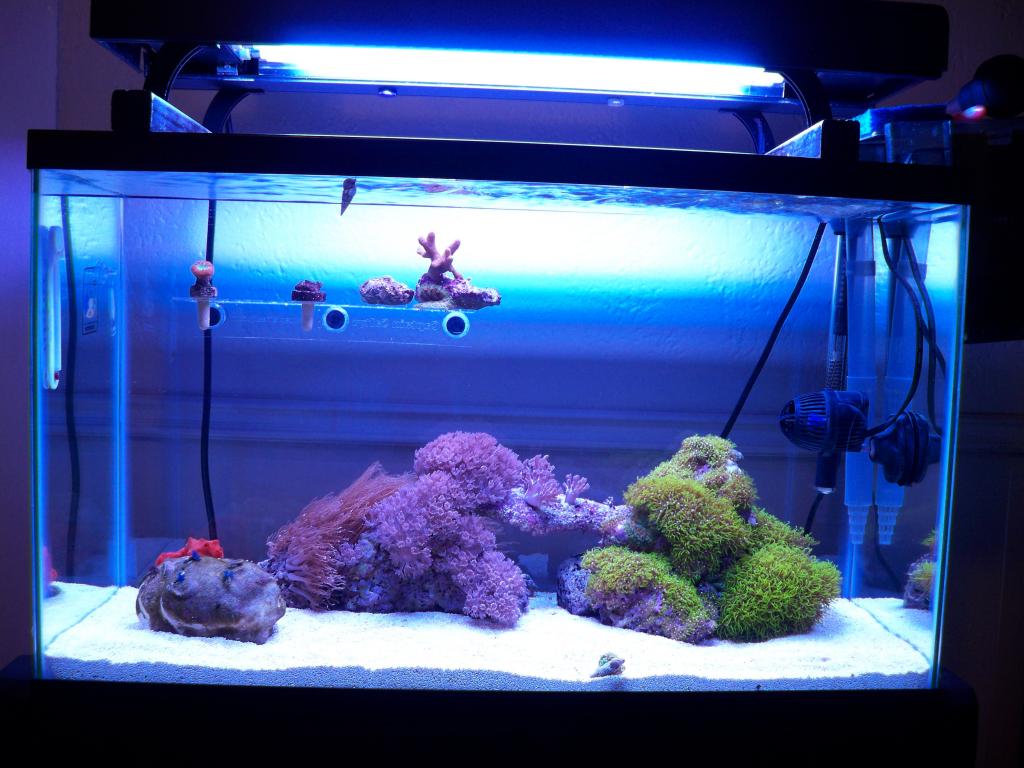
A simple coral/invert quarantine tank.
Free Swimmers: This is the infective stage, which propels through the water seeking fish to infect. However, it is possible for this free swimming stage to come into contact with any coral/invert and remain there. Especially if it has become weakened (unable to swim) or damaged in some way. A free swimmer could then hitchhike its way into your Display Tank (DT) if you were to buy an “unlucky” coral/invert. There are two ways of alleviating this threat:Tomonts: This is the “egg” stage, which encysts upon hard surfaces. It cannot be washed away like free swimmers, and scrubbing tomonts off is likely to be very hit or miss. In addition, it is unlikely that coral dips have any impact on tomonts, since not even copper can eradicate them (copper only kills free swimmers). So, the only way of dealing with this threat is to wait out any tomonts by isolating newly purchased corals/inverts to a fishless environment. As previously mentioned, a frag tank is ideal to use as a coral/invert QT so long as no fish are being housed in it.
Tomonts inevitably rupture and release free swimmers (previously discussed) into the water. When a free swimmer fails to find a fish to feed upon, it starves to death. How long this entire process takes, and thus how long you must QT a coral/invert, is what I will discuss below.
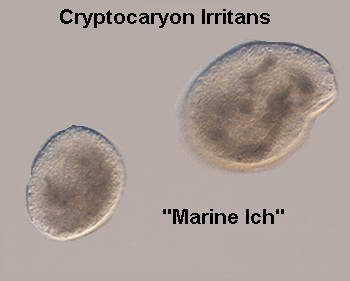
Could this be on a new coral or invert you just purchased?
In most cases, 45 days worth of isolation will eliminate most threats. This includes velvet, brook, flukes, bacterial infections and all but one strain of ich. In a 1997 study (Colorni and Burgess) it took 72 days for all the theronts to be released from a group of tomonts. However, that study has been the subject of debate, because the longer excystment period occurred at 20C (68F), and it is possible that lower temperature slowed down the parasite's life cycle. More on this can be found here: https://www.reef2reef.com/threads/marine-ich-and-temperature.232825/
In any case, the Colorni and Burgess study directly influenced the “76 day rule” (explained here) – which is the widely accepted fallow (fishless) period to rid a DT of marine ich (and all other diseases except Uronema marinum.) Therefore, 76 days worth of isolation in a fishless environment is also the safest time frame to QT all corals/inverts. However, whether you choose to QT for 45 or 76 days really comes down to your tolerance for risk. There are always exceptions to every rule, so let's break down exactly how long you need to QT various corals/inverts:

* Whether to isolate to a fishless environment for 45 or 76 days comes down to your tolerance for risk. Obviously, a longer QT period is always better from a disease prevention standpoint.
** Starfish & sea urchins cannot carry the encysted stage (Peter Burgess 1992).
*** Use a coral dip (e.g. CoralRx) to eliminate any hitchhikers or tiny crustaceans, such as pods.
(a) Or until first molt is observed. Any tomonts will be on the shedded exoskeleton.
(b) LPS & SPS both have stony components that tomonts can easily adhere to. Most soft corals contain sclerites (skeletal needles) which they use for absorbing calcium. Zoas often come on a small rock or coral plug, both of which a tomont could encyst upon.
(c) No available information on these (and others not mentioned above), so best to play it safe and QT for 76 days.
Note: The information contained in the chart above was mostly derived from Dr. Peter Burgess 1992 thesis: https://pearl.plymouth.ac.uk/bitstream/handle/10026.1/2632/PETER JOHN BURGESS.PDF?sequence=1
The table (below) was taken from that publication and to my knowledge, is the only time Cryptocaryon attachment and cyst development has been studied on corals & inverts.
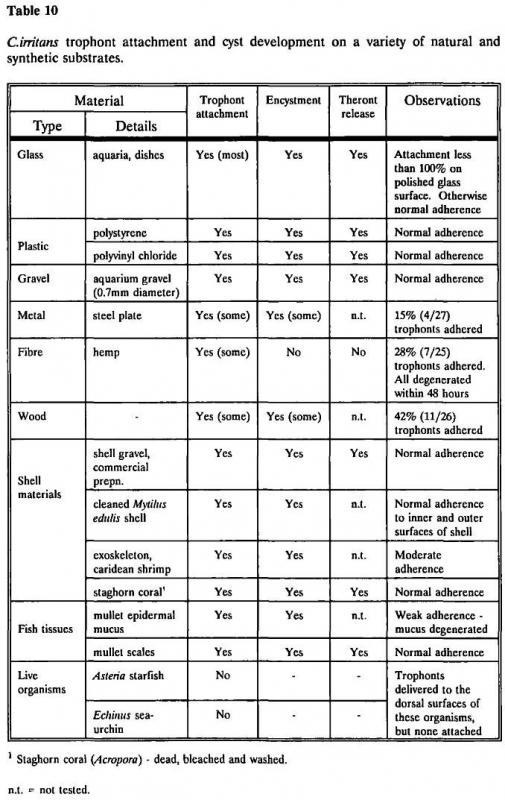
Quarantine these just as you would a fish:
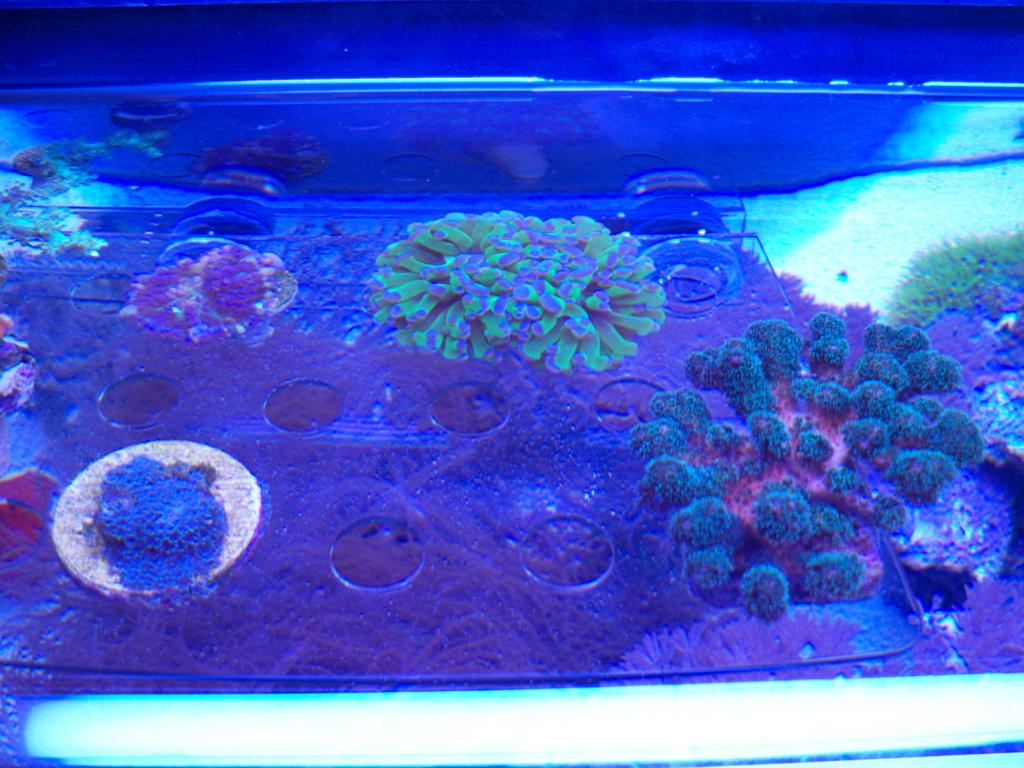
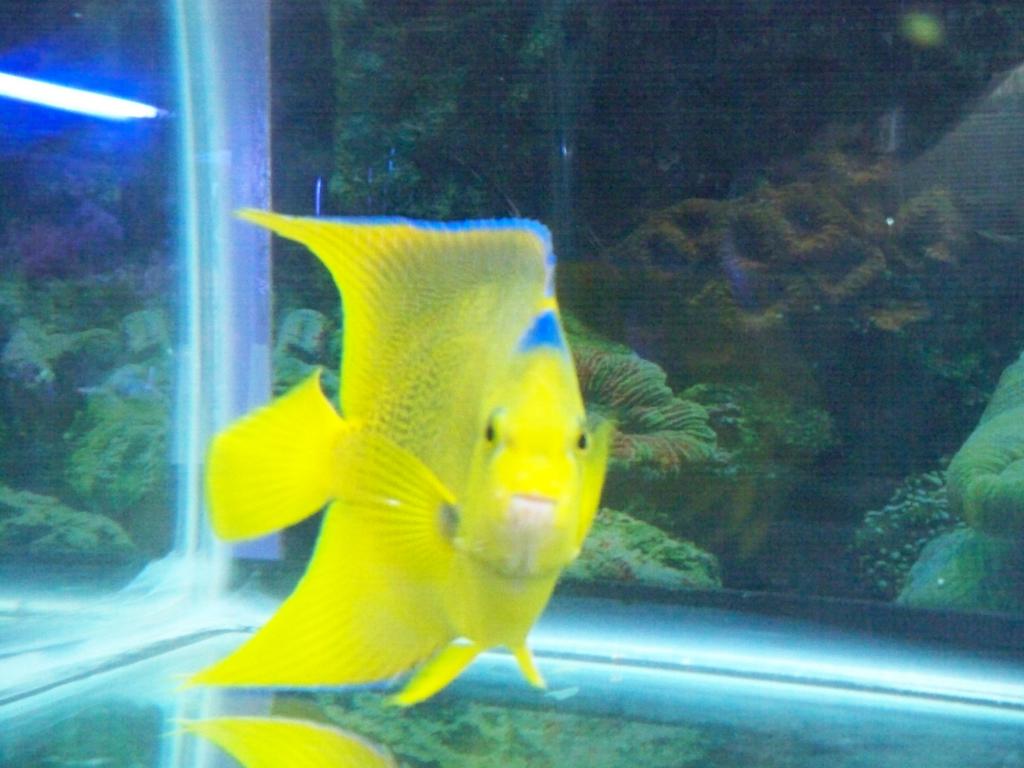
@Humblefish @revhtree I am rather new to this and had a few questions after reading many of your posts/threads and hope you can help!
Quick story: I recently bought a Wheeler Shrimp Goby and Tiger Pistol Shrimp and put them in the same 10gal QT with PVC and new sand in a small container. I believe the Goby had some sort of disease or parasite because it ended up dying after 3 days. I made sure I followed the "Do's and Don'ts" of QT and checked all parameters and even did a last ditch water change to try and help. Ultimately it didn't help and he died overnight before I was able to take any other action or treat with any medication (Can provide more detail or pictures if needed, but I don't know what else would have killed it that fast).
Now I don't know what to do with the Pistol Shrimp. He is still in the QT. He won't go near the sand in the container and I am afraid he could be hosting or carrying some of the nasty diseases. I read if they are introduced to velvet or ich they need to be QT for 45 - 76 days without other fish to kill off or starve the ice/velvet.
How do I do this? I am brand new to fish keeping and I really am having a tough time... this is fish #4 that has died in the past 4 months and I really don't want to kill anything else.
Quick story: I recently bought a Wheeler Shrimp Goby and Tiger Pistol Shrimp and put them in the same 10gal QT with PVC and new sand in a small container. I believe the Goby had some sort of disease or parasite because it ended up dying after 3 days. I made sure I followed the "Do's and Don'ts" of QT and checked all parameters and even did a last ditch water change to try and help. Ultimately it didn't help and he died overnight before I was able to take any other action or treat with any medication (Can provide more detail or pictures if needed, but I don't know what else would have killed it that fast).
Now I don't know what to do with the Pistol Shrimp. He is still in the QT. He won't go near the sand in the container and I am afraid he could be hosting or carrying some of the nasty diseases. I read if they are introduced to velvet or ich they need to be QT for 45 - 76 days without other fish to kill off or starve the ice/velvet.
How do I do this? I am brand new to fish keeping and I really am having a tough time... this is fish #4 that has died in the past 4 months and I really don't want to kill anything else.
Hi, we have a new team here that helps with fish disease issues. This post explains how to post problem reports:@Humblefish @revhtree I am rather new to this and had a few questions after reading many of your posts/threads and hope you can help!
Quick story: I recently bought a Wheeler Shrimp Goby and Tiger Pistol Shrimp and put them in the same 10gal QT with PVC and new sand in a small container. I believe the Goby had some sort of disease or parasite because it ended up dying after 3 days. I made sure I followed the "Do's and Don'ts" of QT and checked all parameters and even did a last ditch water change to try and help. Ultimately it didn't help and he died overnight before I was able to take any other action or treat with any medication (Can provide more detail or pictures if needed, but I don't know what else would have killed it that fast).
Now I don't know what to do with the Pistol Shrimp. He is still in the QT. He won't go near the sand in the container and I am afraid he could be hosting or carrying some of the nasty diseases. I read if they are introduced to velvet or ich they need to be QT for 45 - 76 days without other fish to kill off or starve the ice/velvet.
How do I do this? I am brand new to fish keeping and I really am having a tough time... this is fish #4 that has died in the past 4 months and I really don't want to kill anything else.

Some Helpful Hints When Posting or Responding to Threads in the Fish Disease Treatment and Diagnosis Section
Aquarium Fish Disease Problem Solving Determining the best course of action for a problem with your aquarium can be a difficult task. Even advanced aquarists will often need to seek the help of others for complicated or unique issues. Our intent here on Reef 2 Reef is to offer expert advice...
 www.reef2reef.com
www.reef2reef.com
Goby/shrimp pairs are difficult to quarantine because the fish may need medication that the shrimp won’t tolerate.
Since you don’t know why the fish died, it would be safest to hold the shrimp in a tank with no fish for 60 days.
Jay
Great thread, of course.
Quick question - does Bayer or other dip kill free swimmers ? Not tomonts. I understand it does not do that.
My question is after the 76 day QT, we are free to add the frags or whatever to the DT. However, if we had put other inverts/corals into QT, then the clock would be reset as there is the possibility of free swimmers being transported with the residual water on the specimen being transferred from QT to DT, even if you are rinsing a coral frag thoroughly with tank water. However, if you ran them through another dip before going DT, would that kill off any free swimmers and eliminate that risk, thereby removing the "clock reset" ?
Aren't they just a form of crustacean so susceptible?
Quick question - does Bayer or other dip kill free swimmers ? Not tomonts. I understand it does not do that.
My question is after the 76 day QT, we are free to add the frags or whatever to the DT. However, if we had put other inverts/corals into QT, then the clock would be reset as there is the possibility of free swimmers being transported with the residual water on the specimen being transferred from QT to DT, even if you are rinsing a coral frag thoroughly with tank water. However, if you ran them through another dip before going DT, would that kill off any free swimmers and eliminate that risk, thereby removing the "clock reset" ?
Aren't they just a form of crustacean so susceptible?
Similar threads
- Replies
- 37
- Views
- 1,458
- Replies
- 2
- Views
- 200
- Replies
- 11
- Views
- 203
New Posts
-
-
Help with skimmer. And help with foam in my sump
- Latest: heelanjeffrey85
-
-
-



















